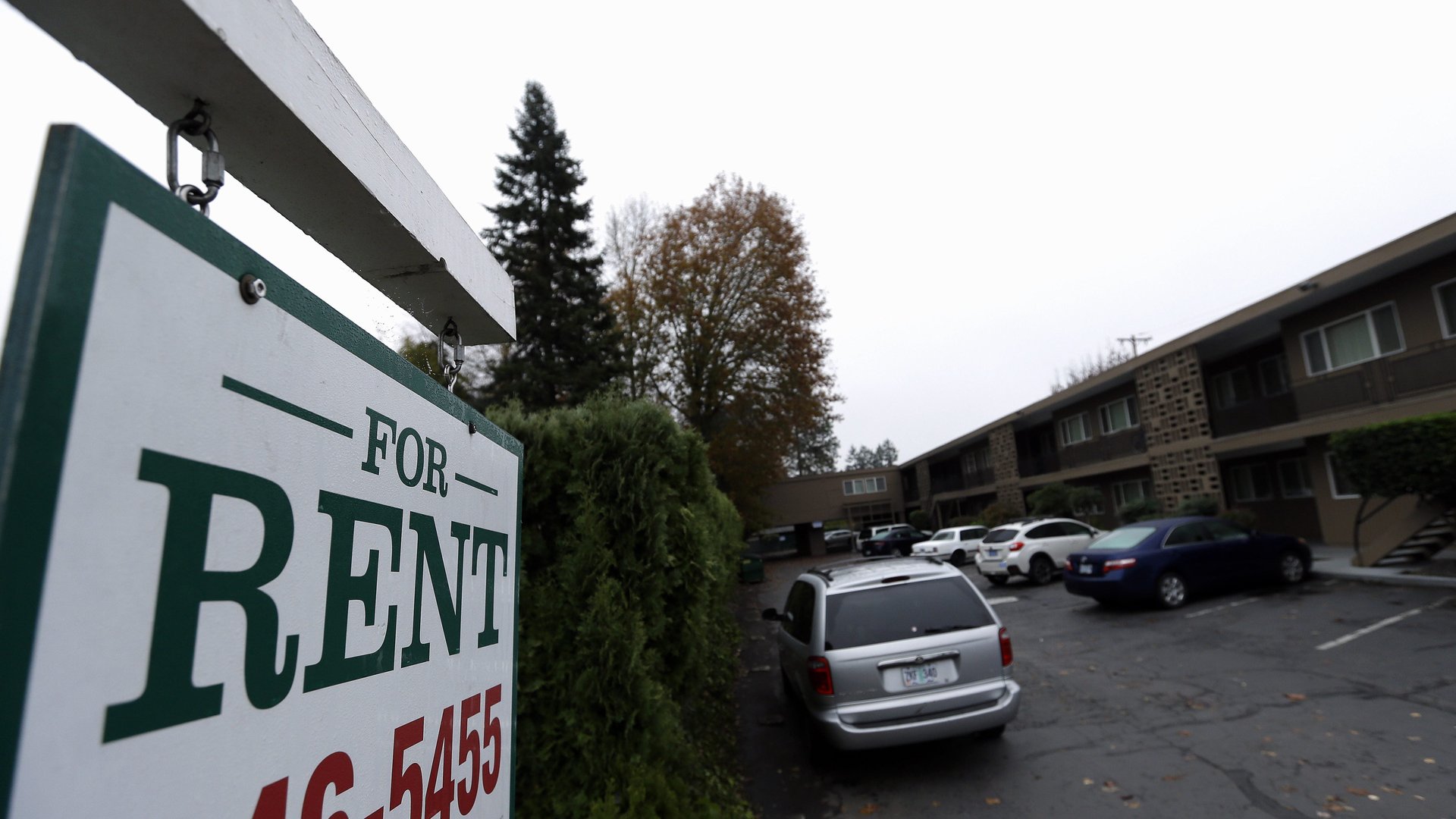Trump’s America will be a nation of renters
Donald Trump will have a hard time making America great again if the bulk of Americans can’t afford to own a home.


Donald Trump will have a hard time making America great again if the bulk of Americans can’t afford to own a home.
As interest rates creep up, home prices soar, and affordable housing dwindles, housing experts say next year could be a tipping point for renters outpacing home owners in the US.
“Are we going to become a renter nation?” says Nela Richardson, chief economist at Redfin, a national real estate brokerage. “Right now we’re heading in that direction.”
The Federal Reserve’s quarter-point interest rate hike this week, to 0.75%, is widely expected to be followed by more rate increases next year, which will put upward pressure on mortgage rates.
And while president-elect Trump has bemoaned the notion of rising rates, his policy proposals on immigration, and his pick of Ben Carson for head of the US Department of Housing and Urban Development, a critic of affordable housing policies, aren’t likely to help the cause of American homeowners, either.
Thanks to shrinking home inventory, home price increases are outpacing rental rate growth. In September, home prices jumped 5.5% from the previous year nationwide, after climbing steadily for several years, according to the Case-Shiller index.
Meanwhile, the growth in rental rates has slowed relative to property appreciation, according to a national index produced by researchers at Florida Atlantic University and Florida International University. In some of the country’s most expensive markets, rents have started falling for the first time in six years, which experts consider to be a bellwether for rental markets across the country.
The president-elect’s impending crackdown on immigration has the potential to push home prices even higher, by reducing the supply of affordable housing. Housing inventory has been declining for five quarters in a row, and is down 3.4% this year.
Builders have migrated toward higher-end homes, as cheap labor shortages have raised their costs. The number of construction workers in housing is down 40% from its peak in 2006, thanks to a slowdown in immigration and the departure of workers who left the industry after the housing bust and didn’t return. ”Given that nearly one in four construction workers are foreign-born, stricter immigration policies from the Trump administration are likely to make the problem worse,” says Richardson.
The national rent-to-price ratio, which is the ratio of the average annual rent to the average cost of buying a home, has been falling since 2012, which indicates the relative advantage of renting over owning. As home prices rise faster than rental prices, the rent-to-price ratio comes down. That suggests not only that home purchases are less affordable, but also that the value of buying even for the affluent is declining, as monthly mortgage payments exceed the income an owner could earn from renting out their home.
Lawrence Yun, the chief economist at the National Association of Realtors, says the dearth of new and existing homes has kept potential buyers out of the market. This is especially true for millennials, who are shying away from home ownership because of high student debt and stagnant wages. Even though household incomes rose strongly last year, in many cities they haven’t risen as fast as home prices.
“Without more supply, the US homeownership rate will remain near 50-year lows,” Yun said in a recent report. It’s food for thought for a president tasked with restoring the American dream.